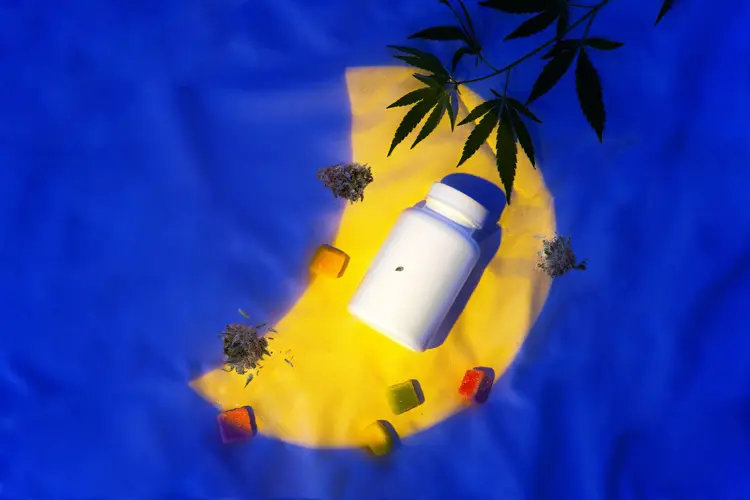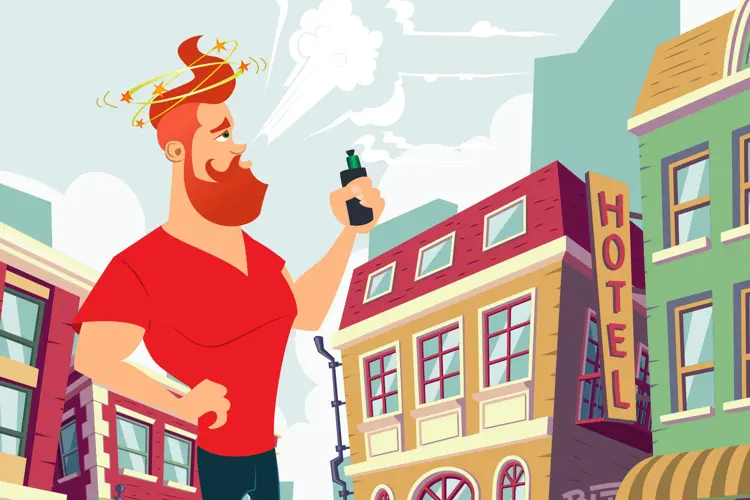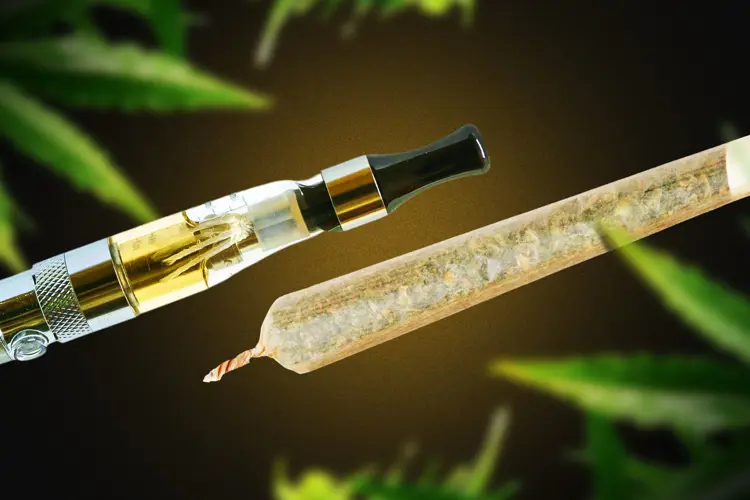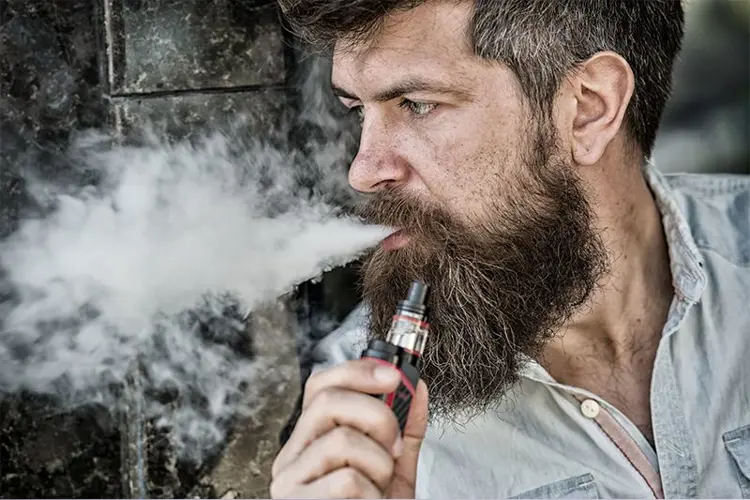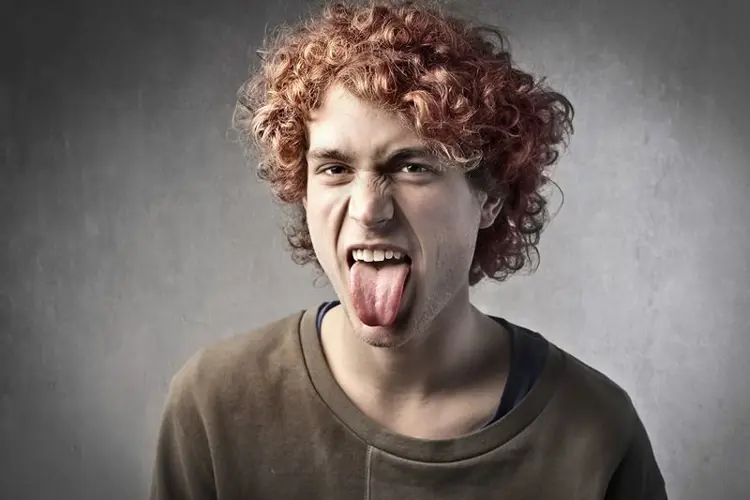Introduction
Are you wondering why you no longer get a JUUL buzz? You’re not alone! Even for those vapers not using a JUUL, online vape forums are peppered with questions by new nicotine users about their e-cigarette buzz disappearing.
“Why can I not get a juul high anymore?”
“So I got a JUUL around 2 weeks ago and I loved it, it gave me a great nic buzz and worked amazing. I bought a pack of mint pods and they were working great. About 3 days ago I noticed that I'm not getting a nicotine buzz anymore.”
“No more buzzes :(“
The answers from experienced users are blunt:
“Because that’s just how nicotine works. It’s a crappy recreational drug.”
“Thaaaaat’s nicotine. If you still can, you should stop now.”
“Yeah it’s called tolerance. This is how the addiction begins BTW.”
Most experienced nicotine users simply aren’t chasing the same experience that “novelty users” are. Most adults who vape or smoke regularly aren’t seeking a nicotine or JUUL buzz at all. The racy feeling experienced by some new nicotine users fades away with continued use. If you don’t want to lose the nic buzz, you have to go without nicotine for extended periods, and not many nicotine users have the discipline to pull that off.
Nicotine buzz: all you need to know
Nicotine is the second-most popular stimulant drug in the world, after caffeine. Like the drug in coffee and tea, nicotine is a mild stimulant that slightly alters your mental state. These are the most common statements about how a nicotine buzz feels:
- Calming
- Increased focus and concentration
- Alertness
- Head rush or lightheadedness
- Dizzy or woozy
Notice that that some of those feelings contradict the others. Oddly, both groups are right. Nicotine in small quantities tends to act like a stimulant, while larger doses can have a sedative effect. It’s a paradox.
The focus and alertness isn’t necessarily associated with the “buzz” people talk about. The buzz comes from using a large dose quickly or being new to the drug. But nicotine’s ability to center the regular user, to relax and refocus, is a standard feature of moderate nicotine use. That's what most nicotine users are seeking.
When nicotine enters the bloodstream, it travels to the brain and binds with nicotinic cholinergic receptors that reward the user by releasing dopamine and other neurotransmitters that have pleasurable effects. And because it has vasoconstricting properties, it tightens the blood vessels and temporarily raises the heart rate and blood pressure, which can cause dizziness, a headrush—or a wave of calmness.
How long does a nicotine buzz last?
The “high” fades pretty quickly, usually in just a few seconds. On the other hand, if you’ve gone past your comfort zone in an attempt to get a serious buzz, you might continue to feel some of the symptoms for a half-hour or slightly more.
Symptoms is the right word. It’s not necessarily pleasurable. Overusing nicotine can make you feel disoriented or even nauseated. Your pupils may dilate, and you may feel shaky or jittery. But it will go away eventually if you stop vaping.
If you keep chasing that brief dizzy rush from nicotine over and over again, you’ll eventually need longer “tolerance breaks” to maintain the ability to produce a nic buzz—or you'll become a regular nicotine user and give up on the dizzy sensation altogether.
Why does nicotine stop giving a buzz?
If you use nicotine regularly, you develop a tolerance for some of the effects, as is the case with most drugs, and especially those that have habit-forming properties. Nicotine stimulates receptors in the brain that release neurotransmitters like dopamine—but the receptors don’t have unlimited capacity. When they’re full, additional nicotine just won’t do much for you besides make you feel sick. And when you use nicotine habitually, those receptors are almost always full, meaning that you’ll lose the ability to feel a “nic buzz.” Basically, the nicotine is no longer a novelty to your brain; it's expected.
You may become dependent on nicotine—or, as the newspapers and anti-vaping advocates call it, addicted. Whatever word you use, when that happens, you’ll stop chasing the nicotine buzz dragon and start maintaining: keeping your blood nicotine at the optimal level by using it first thing in the morning, and then topping it up throughout the day. Either that or you’ll make yourself sick trying to find the elusive, missing buzz.
Is there a way to get the buzz back?
The only remedy is to stop using nicotine until your nicotinic receptors are “empty.” Even veteran nicotine users feel more of an effect after a night’s sleep. That’s why the “morning cigarette” is supposed to be the best: after a few hours without nicotine your brain is primed for it.
If you’re not actually dependent on nicotine and you just want to experience that short-lived feeling, it’s best to vape infrequently.
The phenomenon of “social smokers” is well known. These are people who smoke only occasionally, usually at parties or other social gatherings. They smoke for the buzz or for other reasons, but they never graduate to the frequent use that brings dependence and most major health risks for smokers.
The problem is that any amount of cigarette smoking can cause long-term cardiovascular damage, and even sudden cardiac death. That’s because the carbon monoxide in smoke can cause freak cardiac events even in occasional smokers.
Being a “social vaper” is a less risky proposition. E-cig vapor doesn’t contain carbon monoxide or other combustion products. And if you only vape on the weekends, you’ll probably maintain your ability to feel a pronounced effect from the nicotine in your vape. Or, like many social smokers, you’ll graduate to regular use.
Will any nicotine product get you buzzed?
If you miss that feeling of a nic buzz and want to find it in another product, there are some things to consider. A big part of the nic buzz (and also the drug’s addictive potential) comes from the speed with which it’s delivered to the brain. Inhalation is the fastest way to reach the brain’s receptors. It travels from the lungs to the brain in just 10-20 seconds—even more quickly than injection. And nothing does that faster than cigarettes, which are optimized to deliver nicotine as rapidly as possible.
But vaping is catching up, if not already there. Modern vaping devices are very good at providing nic quickly and in large, cigarette-like amounts. They offer options too. You can choose a tiny, low-power device that uses very strong nicotine salts, or a sub ohm tank that delivers a high volume of lower-strength standard (freebase) nicotine. Both work well, and now more than ever smokers have choices that make vaping an attractive and effective alternative to smoking.
You can probably get the same effect from inhaling a cigar or pipe too, but don’t try inhaling them. Those forms of tobacco are extremely harsh to the throat and lungs; they’re made to puff, not to inhale. Cigarettes are much milder, because the tobacco is cured and treated so it’s easy to inhale—and easy to get addicted. Because the lungs deliver the nicotine from cigarette smoke rapidly to the brain—much more quickly than you can absorb it through the tissues of the mouth and throat, as you do with cigars or pipes—the receptors react immediately and give the user the desired reward. Cigars and pipes offer a long, slow nicotine ramp-up.
When you start craving the sensations you get from nicotine and using it more often, that’s the beginning of dependence, or what some people call addiction.
Oral forms of nicotine are also absorbed through the mouth and throat. Like cigars, they can be very effective at achieving and maintaining a high blood nicotine level, but they never create that immediate jolt we’re calling a nicotine buzz. However, after 30 minutes or so, when the nicotine delivery plateaus, oral tobacco like snus or chew definitely are felt. And unlike smoked tobacco, smokeless tobacco continues to deliver nicotine even after it’s removed from the mouth, because nicotine embedded in the cheeks and gums continues to be absorbed (at lower and declining levels) into the bloodstream for up to an hour. (Oral nicotine replacement therapy products like gum and lozenges have a similar delivery profile as smokeless tobacco.)
Nicotine transdermal patches, which deliver nicotine through the skin very gradually, are the slowest delivery method of all. In fact, they’re so slow that researchers don’t believe they can create nicotine dependence in people who’ve never used the drug before. Could you get a buzz by wearing several nicotine patches? Maybe...eventually. Or you might just wind up feeling stupid and scratching a bunch of itchy red welts.
Side effects: the science
As with caffeine, chasing a nicotine buzz can lead to a point where you hang between the novelty of the head rush and the uncomfortable sensation of wanting to jump out of your own skin. And if you go one step further down the nicotine road, you’ll encounter the early symptoms of nicotine overdose:
- Dizziness
- Headache
- Nausea
- Cold sweats
- Racing heartbeat
- Anxiety
- Ringing ears
Most smokers and vapers have made this mistake at least once. Vapers sometimes call it being “nic sick.” It often happens by using a higher nicotine level than normal, or a new device that delivers more nicotine than you expect. You vape a little too much a little too fast and boom, it’s time to sit down for a while. That’s nic sickness. The remedy is simply to stop vaping.
Although science suggests there are actual health benefits to some nicotine users, it's still a drug. Nicotine is not recommended for people with serious heart disease or cardiovascular conditions. For that group, any kind of strong stimulant could possibly trigger a serious cardiac event. Of course, people with heart disease are unlikely to be thrill-vaping their way to a nic buzz anyway. (Vaping is still a much lower risk than smoking for people with cardiovascular conditions, of course.)
A lot of the pleasure longtime nicotine users feel is simply relief at having satisfied the craving for nicotine---much like caffeine lovers enjoy the first coffee of the day.
Nicotine poisoning and true nicotine overdose is very uncommon among adults, and is usually the result of a suicide attempt by injection. It would be a horrible way to die, but people try it fairly regularly. However, there is no chance of a healthy person experiencing a dangerous overdose from vaping or smoking.
The only way someone could consume enough nicotine quickly enough—aside from injection—to put them in real danger is to swallow high-strength nicotine intended for mixing. But it would have to be swallowed very quickly, and in very high quantity, in order for the body to absorb a deadly amount before instant gagging and vomiting expelled most of it.
If that happened, or if someone had a nightmare DIY mixing accident where they drenched themselves in very high-strength nicotine and weren't able to wash it off before absorbing a dangerous quantity, the symptoms could be truly terrible:
- Stomach cramps, diarrhea
- Weakness
- Low blood pressure
- Loss of muscle control
- Confusion
- Bradycardia (slow heart rate)
- Seizures and convulsions
- Coma
- Respiratory failure
- Cardiac arrest
- Death
The true danger of nicotine poisoning, of course, is for small children, who are liable to drink anything they can get their hands on. In fact, there is one case of a child dying from ingesting 100 mg/mL (10 percent) nicotine that was left uncapped by his parents. Just a few milliliters of liquid that strong is capable of killing a toddler. Please don’t leave any nicotine product within reach of children.
Will chasing the buzz get you addicted to nicotine?
The more you use nicotine, the more likely you are to become dependent on it. And the more you like that buzz, the more likely you are to keep trying to achieve it over and over. When you start craving the sensations you get from nicotine and using it more often, that’s the beginning of dependence, or what some people call addiction.
But is vaping really an addiction? Psychologists generally define addiction as compulsive behavior repeated despite the knowledge that it will harm the user. That would certainly include smoking, but it’s a stretch to define vaping nicotine as addiction, since it doesn’t cause any harm that we know of. It's not merely physical dependence or frequent use that defines an addiction.
Remember, nicotine stimulates and relaxes. Chasing a buzz exaggerates one effect and eliminates the other completely.
Using the term “addiction” to describe a vaper dependent on nicotine, and devoting expensive resources to lecture teenagers about the supposed horrors of juuling and addiction, is kind of disrespectful to people battling real addictions to opioids or alcohol. Those people risk their lives, often destroy their families, and sometimes wind up in prison.
That said, some chasers of the nicotine buzz display what looks a lot like addictive behavior. If you’re ripping through JUUL pods and making yourself sick looking for a buzz, you might have a problem. You might not lose your moral compass, but it may be wise to try to find some help and quit.
A lot of the pleasure longtime nicotine users feel is simply relief at having satisfied the craving for nicotine—much like caffeine lovers enjoy the first coffee of the day. Like caffeine, nicotine isn’t much of a recreational drug. It doesn’t really get you high, and the brief rush or buzz only comes by using too much of it and risking headache and nausea.
Getting over the buzz
Turning the mild pleasures of nicotine or caffeine into a game of sensation-seeking is kind of a perversion of what these drugs offer most users. Slamming down high-nic pods or chugging energy drinks misses the real point of lightweight stimulants like nicotine and caffeine.
They offer moments during the day when you can break briefly with your routine and refocus yourself, or enjoy a few minutes of effortless pleasure. Remember, nicotine stimulates and relaxes. Chasing a buzz exaggerates one effect and eliminates the other completely. What a shame!
President Trump promised during his election campaign to “save vaping," but his administration has undermined that goal at every turn.
The U.S. disposable vape market has grown to $2 billion in annual sales, although nearly none of the products are authorized by the FDA.
More than 30 bills that would impose severe restrictions vaping consumers’ product choices remain active in U.S. state legislatures.
The Freemax REXA PRO and REXA SMART are highly advanced pod vapes, offering seemingly endless features, beautiful touchscreens, and new DUOMAX pods.
The OXVA XLIM Pro 2 DNA is powered by a custom-made Evolv DNA chipset, offering a Replay function and dry hit protection. Read our review to find out more.
The SKE Bar is a 2 mL replaceable pod vape with a 500 mAh battery, a 1.2-ohm mesh coil, and 35 flavors to choose from in 2% nicotine.










